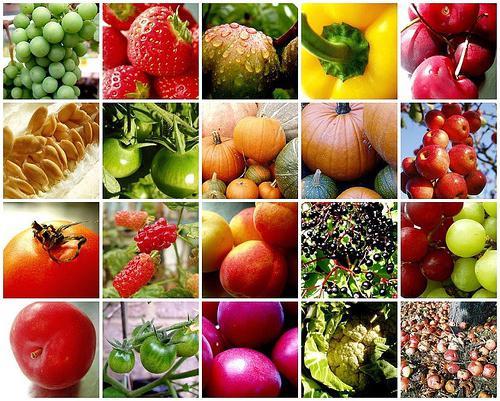
Botanically speaking, the fruit is an essential part of the reproductive system of flowering plants, the angiosperms, corresponding to the so-called ovary, or the structure suitable for carrying the seeds.
Evolution, with a long and refined work, has made these reproductive tools useful also to animals, including the human being, transforming the fruit structure into meaty, attractive food, rich in water, fiber, mineral salts, carbohydrates, vitamins, secondary metabolites.
A summary list of the types of fleshy fruit, interesting from a food point of view, mainly includes the drupe (for example peaches, apricots, plums ...), the berries (tomato, grape, banana, currant ...), the citrus or hesperides (lemon, orange, mandarin, lime ...), but also the so-called aggregate fruits, as strawberry and raspberry; the peponidi such as melon and watermelon, part of the berries; the sycons, As the fico; the sorosi as mulberry and pineapple blackberry; and false fruits (or apples), such as apple, pear and quince.
Let's discover the drupes, citrus fruits and berries, characteristics and differences.
Citrus fruits
All the fruits of the plants of the generally Citrus They are considerate citrus fruits, botanically defined hesperides, a particular modification of the berry with radiated symmetry and rich in essential oils.
In these fruits the oils are concentrated in the peel, exploited both alimentary and industrially.
The edible part, endocarp, is very juicy, with a range of flavors that can go from strongly acidic to sweet. The color of the skin and pulp varies from yellow to green to orange (but also blood red).
In addition to essential oils, citrus fruits are very important sources of vitamins, especially C, were very important in the past to ward off scurvy, due precisely to the lack of ascorbic acid in the body.
They are strongly antioxidant and rehydrating fruits. All known citrus fruits are crosses or mutations of three original citrus fruits:
- cedar (acid),
- il pomelo (amaro)
- the mandarin (sweet).
Their consumption is recommended by medical systems and traditions around the world.
In a short practical list we will put:
- Orange,
- lemon,
- lime,
- clementine,
- grapefruit.
Rare citrus fruits: not just oranges
The drupe
The drupe represent a very important fruit subgroup, which nutritionally provides calories, water, sugars, various vitamins.
In the case of the drupes, the peel is very thin, edible, also rich in nutrients; feature a woody and unique seed, Said core, such as peach bone.
This type of indeiescent fruit is typical of the Prunaceae; let's talk about:
- fish,
- apricot,
- plum
- Cherry,
but also
- of the mango,
- of the olive,
- of the neem fruit,
- date,
In some cases they are grouped in small clusters of drupes, such as raspberry and blackberry.
There are spread all over the world, widely exploited commercially due to their importance. Generally they are sweet, fragrant, juicy fruits, present in various colors depending on the polyphenol content.
Among the types of fmore nutritious and satiating route, the drupes are also easily consumable due to the presence of a single seed and the homogeneity of the pulp.
Hybrids of prunaceae, forgotten fruits
The berries
La berries represent the largest group of fruit and it includes numerous species, which have in common the production of a juicy fruit, without central seed but generally rich in small seeds dispersed in the pulp (just think of tomato or kiwi).
Some berries are rich in toxic substances, especially in the case of solanaceae, and therefore are not universally edible.
While generally spherical, both shape and color have one truly unlimited vastness of events: from white to black, passing through red, green, yellow, blue, purple; of modest size, the berries are rich in water, secondary metabolites, vitamins. Their taste is extremely variable depending on the species: it can be neutral, sweet, bitter, acid, and even slightly salty.
Solanaceae cannot be missing in a summary list, therefore:
- tomato,
- the pepper
- l'alchechengi,
but also
- grapes,
- kiwi,
- la banana,
- blueberry,
- the elder.
Berries belong i peponidi: let's talk about pumpkins, melons, watermelons, courgettes.
Finally, we mention the pomegranate, botanically defined balustrade, which on balance it is nothing more than a modified berry rich in curls around the seeds.
Alchechengi and dogwood forgotten fruits of the summer
To learn more:
> All fruit


























